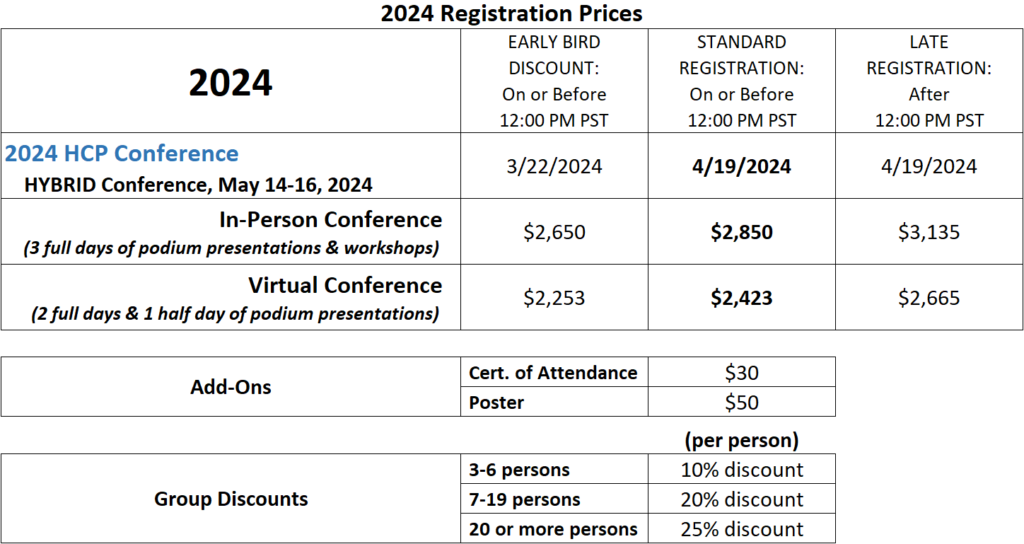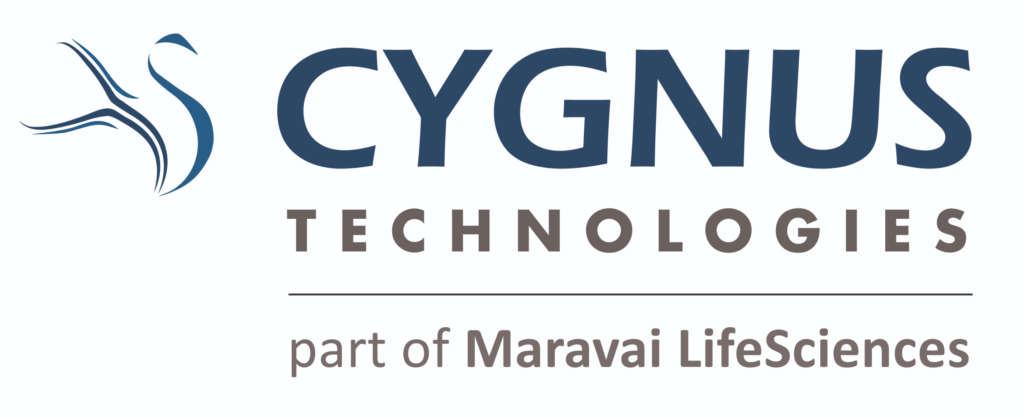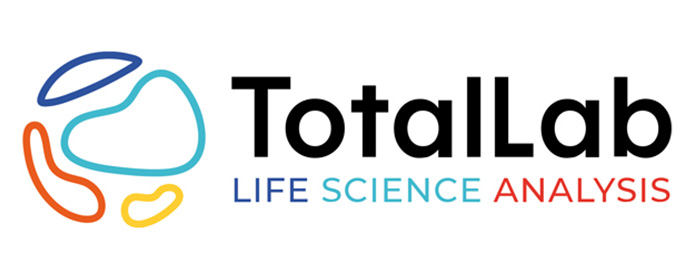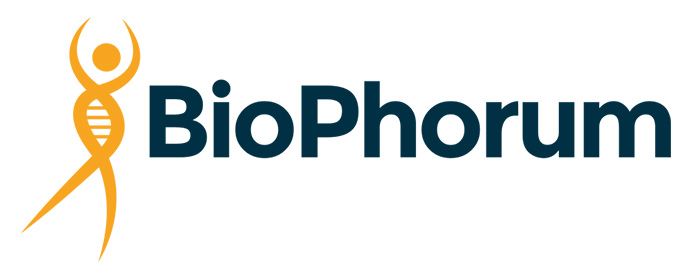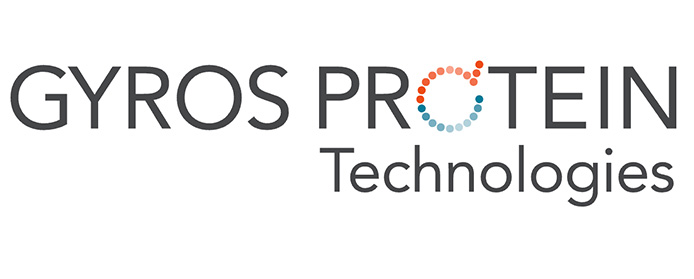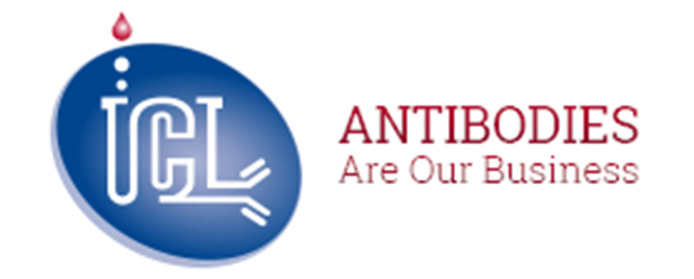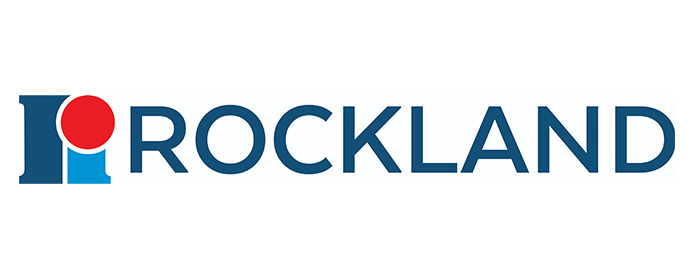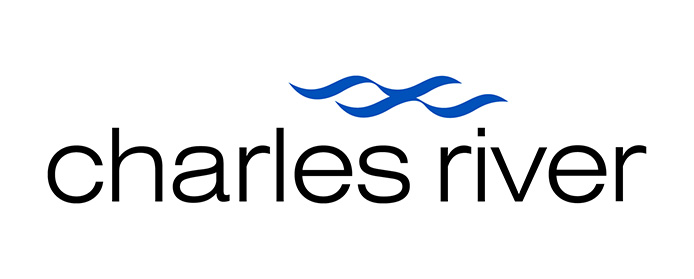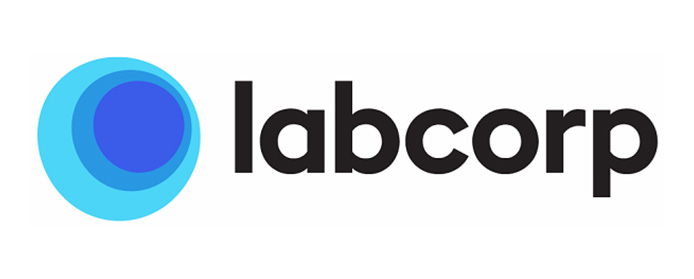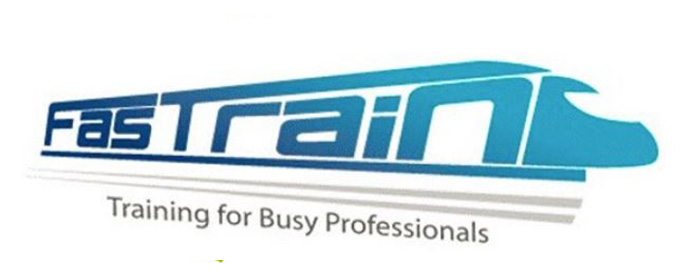BEBPA conferences include 3 days of presentations, workshops and round-table discussions on topics of current interest to the analytical biopharmaceutical community. It is hoped that these presentations and discussions will provide topics for future white paper working groups.
2024 Session Topics
- Regulatory Perspective
- ELISA Development
- HCP and Product Stability
- Bioprocessing
- HCP Analysis
- HCP Challenges
- Mass Spectrometry
2024 Interest Groups
- USP 1132.1
- ELISA Development
Agenda
Download WHOVA before the conference to be able to view the conference agenda, speaker bios and engage with the BEBPA community!
2024 HCP Speaker Abstracts
Title: HCP Profiling of mAbs and AAV Gene Therapy Vectors using Data Independent LC-MS/MS on Orbitrap Astral MS
Abstract: Host cell protein analysis using liquid chromatography with data independent tandem mass spectrometry on the Thermo Scientific Orbitrap Astral MS will be presented for monoclonal antibodies (mAbs), Fc fusion proteins (FcFPs) and AAV gene therapy viral vectors derived from both HEK293 and Sf9 insect cells. Sample preparation was performed using the semi-automated SP3 method on the Thermo Scientific KingFisher Duo Prime prior to nanoscale reversed-phase liquid chromatography on a Thermo Scientific Vanquish Neo UHPLC instrument. Resulting data was processed using Proteome Discoverer version 3.1 and Chimerys for HCP identification and label free quantitation. The application of Orbitrap Astral MS enabled a 6-18 fold increase in analytical speed relative to currently used methods and significantly increased analytical depth, with identification and quantitation of HCPs down to single digit parts per billion (ppb) values possible.
The analytical platform was first applied for the analysis of innovator and biosimilar mAbs and FcFPs to investigate batch-to-batch behaviour and comparability assessment of HCPs. Particular focus was placed on those proteins present on the BioPhorum list of problematic HCPs. Batch-to-batch behaviour was interesting, with some products demonstrating excellent consistency and biosimilars containing lower levels of HCPs relative to their innovator counterparts.
For AAV viral vectors, HCPs detected related to the time of harvest, with a distinct switch in the HCP repertoire determined from those involved in standard cellular processes to those involved in cell response to viral infection as samples were collected at later time points. Different purification processes, i.e., density centrifugation or affinity purification, were also investigated, with the application of AAVX affinity chromatography capable of a significant removal of overall HCP load. For Sf9 derived AAV, baculoviral proteins were also found to be present indicating considerable propagation of the baculovirus used for Sf9 transduction in addition to AAV production.
Contributing Authors:
Josh Smith1, Sara Carillo1, Aaron Richardson1, Colin Clarke1,5, Kristina Srzentić2, Tabiwang N. Arrey3, Anna Pashkova3, Kai Scheffler3, Kelly Broster4, Eugen Damoc3 & Jonathan Bones1,5
1NIBRT, Foster Avenue, Mount Merrion, Blackrock, Co. Dublin, A94 X099, Ireland.
2Thermo Fisher Scientific, Neuhofstrasse 11, 4153 Reinach TechCenter, 4153 Basel, Switzerland.
3Thermo Fisher Scientific, Hanna-Kunath-Strasse 11, 28199 Bremen, Germany.
4Thermo Fisher Scientific, Stafford House, 1 Boundary Park, Hemel Hempstead Industrial Estate, Hemel Hempstead HP2 7GE, United Kingdom.
5School of Chemical and Bioprocess Engineering, University College Dublin, Belfield, Dublin 4, D04 V1W8, Ireland.
Title: Past, Present, and Future of HCP Analytics. Making the Case for Using Advanced Technologies and Methods to Monitor and Control HCP
Abstract: Host cell protein analytics have come a long way over the last 25 years. We have gone from a “black box” type approach that produced numbers that were semiquantitative at best to groundbreaking Mass Spectrometry techniques that can identify every host cell protein in a Drug Substance sample. While the HCP ELISA is still semi-quantitative today, it is by no means a black box. We now have the tools to know exactly which HCP the assay can detect and which ones it will miss. Adoption of advanced technologies and methods for HCP analytics ensures that an HCP ELISA, whether it is a generic or a process-specific assay, is appropriate for use and allows data driven risk assessment to ensure drug product integrity and safety.
Title: What You Can Learn from HCP Analysis of 500 Projects Using LC-MS
Abstract: The development of new biologics necessitates reproducible assays to assess Host Cell Protein (HCP) impurities for process development and for Good Manufacturing Practice (GMP) release testing. Liquid Chromatography-Mass spectrometry (LC-MS) enables detailed HCP characterization with identification and quantification of individual and potentially problematic HCPs. However, transferring LC-MS into Quality Control (QC) laboratories has proven very challenging due to the multistep sample preparation, data analysis of thousands of mass spectra, the complexity of high-end mass spectrometers, and lack of reproducibility of the entire workflow.
At Alphalyse, we’ve developed a general and robust workflow leveraging data-independent and data-dependent mass spectrometry techniques, coupled with the utilization of intact proteins as internal standards. This workflow not only ensures a reliable and reproducible HCP analysis but also enables comparison of HCP levels between projects. To collect insights across projects and samples, we have curated a comprehensive database. Currently, this database comprises of data on 34,865 uniquely quantified HCPs from hundreds of HCP projects spanning various drug categories, e.g., mAbs, recombinant proteins, vaccines, gene therapy products, and a spectrum of sample complexities, ranging from early process samples to final purified drug substances. The database includes data from 45 different host cell organisms, and 49 distinct strains and viral vectors e.g., CHO, E. coli, HEK, Sf9, AAV, Lentivirus.
The extensive database provides information about commonly found HCPs in similar drug types and insights into the process clearance of problematic HCPs. This information enhances our understanding of HCP profiles in biologics manufacturing and empowers informed decision-making for HCP clearance and monitoring. For example, we have evaluated hundreds of mAb in-process samples and purified DS for the levels of lipases that may degrade polysorbate in the DP. The information has enabled us to develop a high sensitivity LC-MS assay specifically for lipases in mAbs. The database also enables us to monitor assay performance and to evaluate critical method validation parameters for GMP release testing. The presentation will include insights about problematic HCPs across drug types and essential method parameters for assay quality control.
Title: Control Strategy for Lentivirus Vector-derived HCPs Impuriy in CAR-T Final Drug Product
Abstract: Controlling the residual host cell proteins (HCPs) derived from lentiviral vector (LVV) manufacturing process in cell therapy CAR-T drug product (DP) is essential to ensure product quality and patient safety. However, the specific measurement of the vector process derived HCPs in CART DP is challenging particularly since human origin cell lines are used to generate vector, i.e., it is difficult to distinguish between the residual HCPs from the CAR-T derived proteins. In addition, some HCP impurities are integrated into the envelope or packaged to HIV1 virion cores during the lentiviral particle assembly which further complicates interpretation of analytical data. We present an integral HCP control strategy that overcomes these challenges and ensures the adequate control of LVV derived HCPs in CAR-T products. The proposed control strategy comprises of acquiring the knowledge of total HCP level and composition in LVV drug substance through orthogonal analytical techniques, then understanding the protein clearance capacity of CAR-T drug product process and applying risk mitigation strategy. First, the total HCPs levels in LVV drug substance are quantified using ELISA method following by identification of high abundance HCPs in LVV using LC-MS method. Subsequently, clearance occurring during the CART DP process can be calculated theoretically based on dilution factor using the worst-case scenario and confirmed by the surrogate protein clearance study, e.g., vector derived p24, cell derived SV40 antigen, and if feasible, other representative HCP impurity. Lastly, based on gained knowledge the risk assessment is performed to ensure the levels and species of HCPs do not negatively affect the overall quality of CAR-T final DP.
Contributing Authors: Chunling Wa, Jeffrey Chu and Roman T. Drews
Title: Developing a High-Sensitivity Method for Detection and Quantification of Host Cell Proteins in Biopharmaceuticals by Mass Spectrometry: A Company Perspective on an Industry-Wide Challenge
Abstract: Most host cell proteins (HCPs) originating from the production cell lines of biopharmaceuticals are removed during the downstream process. However, there is a certain risk that some HCPs are still present within the final product and may adversely affect product quality, even at very low abundance. Many biopharmaceutical companies have experienced the problematic issue of low abundant HCPs causing polysorbate degradation in their drug product, ultimately leading to the termination of potentially innovative projects.
Since then, we have set out to develop a method sensitive enough to detect HCPs at sub-ppm levels. With the help of HPLC-coupled mass spectrometry, we developed a sample preparation method based on the native digest procedure specifically tailored towards samples with a high dynamic range. Benchmarking the method using UPS1, we were able to detect proteins down to sub-ppm levels, proving its suitability for model project samples derived from final polishing steps during downstream.
To further identify the actual culprits for polysorbate degradation, activity-based proteomic profiling was carried out. Here, a commercially available, as well as an in-house developed activity probe, was used to capture active enzymes in HCCF that are responsible for polysorbate degradation. Combined with knowledge from the literature, a list of proteins was summarized, which would later be the major focus for quantification assays.
Using data-dependent acquisition methods to quantify polysorbate degrading enzymes in model project HCCFs by MS1, a list of peptides suitable for quantification was generated. The transitions of these peptides were then used for PRM measurements to determine the stability of the method as well as the quantitative linearity of every peptide. Evaluation of the results further condensed the list of peptides used for quantification.
In the foreseeable future, benchmarking concerning the sensitivity of the method at around the ppm level will be carried out to evaluate the suitability of the method for HCP quantification for drug substances. Later, using HCP-PRM could ultimately support which clone should be later selected for the downstream process. Thanks to the versatility of the method, even beyond HCCF, other downstream intermediates and the final product could also be analyzed to determine the efficiency between different polishing steps.
Title: HCP Control Strategies and Regulatory Requirements
Abstract: Process-related impurities such as HCPs are considered critical quality attributes. Data bases are available listing HCPs that could severely impact patient safety and product quality. The knowledge on critical HCPs is constantly growing. This information could be helpful for the efficient removal of HCPs and the development of suitable HCP control strategies throughout the product life cycle. These strategies are applicable to many product classes. Furthermore, the choice of the most appropriate HCP assay and the life cycle management of the critical reagents are important issues during licensing procedures and could affect market access. Regulatory decisions are based on the respective available EU and US guidelines. Case studies outlining suitable approaches will be presented.
Title: Strategy to Harmonize the Quantitation and Reporting of MS-based HCP Results for Process and Method Development Understanding Across Projects and Their Long Lifecycles
Abstract: Host cell proteins (HCPs) are considered a critical quality attribute in biopharmaceutical products due to their potential to affect safety (increased immunogenicity) and efficacy (reduced potency and stability). Residual HCPs are routinely monitored by enzyme-linked immunosorbent assay (ELISA) for drug substance (DS) batch release. However, HCP characterization by mass spectrometry (MS)-based methods has become a standard approach in process and product development labs for confirming proper HCP clearance by the emergent manufacturing process. With MS, each residual HCP can be identified, quantified, and tracked throughout the downstream purification train, assuring that final DS meets predetermined quality standards. Given the lengthy lifecycle of drug development, the performance of MS-based instruments, methods and software will continue to evolve, in addition to the availability of better curated protein databases, yielding improved HCP detection sensitivities and specificities. As a result, comparing historical and contemporary HCP datasets for the same product can become problematic. This presentation will present a strategy to harmonize the quantitation and reporting of MS-based HCP results. This strategy allows for cataloging of HCPs across a long development life cycle, establishment of HCP clearance necessary for process understanding and regulatory approval, and ultimately the compilation of bioreactor performance across multiple biotherapeutic projects. It also affords a comprehensive means of comparing drastic method changes, such as sample treatments with and without the depletion of the target biomolecule.
Title: Individual Immunoassay Development to Detect High Risk Host-Cell Protein in Protein Therapeutic
Abstract: Mass spectroscopic analysis was used to identify a high risk host-cell protein (HCP) X in a protein sample. A cell-line specific host cell protein ELISA assay was generated to evaluate impurity levels in this sample. However, it was determined that although the antigen does contain host-cell protein X, the ELISA results were different from the results obtained by MS analysis Therefore, an individual immunoassay was developed to quantitate HCP X in the sample. This presentation will focus on the ELISA assay development for HCP X and the control strategy used to test the sample.
Contributing Authors:
Bharathi Govindarajan, Theresa O’Brien, Jean Gamble, Marla Abodeely, Marc Verhagen
Sanofi R&D, Biologics Development, Department of Bioanalytics, Framingham, MA, 01701
Title: HEK293 Total Host Cell Protein ELISA Development to Support AAV Gene Therapy Programs
Abstract: Host cell proteins (HCPs) are process related impurities monitored during expression of biotherapeutics. HCPs can be immunogenic and/or toxic to patients and they can lead to potency or stability issues of the therapeutics and may also lead to degradation of the drug products’ excipients. Therefore, HCPs must be well-characterized, monitored and reported. The most widely used method for monitoring HCP is an enzyme-linked immunosorbent assay (ELISA) due to its high throughput, sensitivity and selectivity. Herein, we report the development of a robust HEK293 total HCP ELISA to support AAV programs. The ELISA demonstrates superior sensitivity and precision for process clearance and DS samples.
Title: Applying UHPLC-HRAM MS/MS2 Method to Assess Host Cell Protein Clearance during the Purification Process Development of Therapeutic mAbs
Abstract: Host cell protein (HCP) is one of the process-related impurities that needs to be well characterized and controlled throughout biomanufacturing process to assure the quality, safety and efficacy of the therapeutic monoclonal antibodies (mAbs). Although ELISA remains a gold standard method for monitoring HCP clearance during the mAb purification process, ELISA lacks the specificity and coverage to identify and quantify individual HCPs. As a complementary method to the ELISA, the LC MS/MS2 method allows identifying and monitoring potentially thousands of HCPs and their relative amounts from a mAb sample and has emerged as a powerful tool for identifying and profiling individual HCP, including problematic HCPs during the downstream purification process. In this study, we applied the HPLC-MS/MS2 method to a Protein A purified biosimilar trastuzumab sample to assess how the HCPs present in the sample can be removed efficiently by using the Thermo Scientific™ POROS™ Caprylate Mixed-Mode Cation Exchange (MMCEX) chromatography resin as a polishing step for further purification. Two trastuzumab samples (one purified by Protein A; another purified by Protein A, followed by MMCEX resin) were digested with trypsin under native conditions. A Thermo Scientific™ Acclaim™ VANQUISH™ C18 column (2.1 × 250 mm, 2.2 μm particle size) was used for peptide separation at 300 μL/min flow rate over a 90 min linear gradient. A Thermo Scientific™ Orbitrap™ Ascend Tribrid™ mass spectrometer was used for data collection. Data dependent MS2 approach was used, in which a HRAM full MS scan was followed by top 12 data dependent HRAM MS/MS scans. Both trastuzumab samples were analyzed in triplicate, respectively. Thermo Scientific™ Compound Discoverer™ 3.2 software was used for HCP identification with the UniProtKB/SwissProt database containing all Cricetulus griseus entries and relative quantification. Only proteins which were assigned as master proteins with high protein FDR confidence and had ≥ two unique peptides were accepted as positive HCP identifications. 186 HCPs, including 12 problematic HCP proteins such as Phospholipase B-like 2 (PLBL2), were identified from the trastuzumab sample after protein A purification. With the polishing purification using MMCEX resin, 126 HCPs of the identified 186 HCPs, including PLBL2 were removed from the trastuzumab sample. 60 HCPs were still present in the trastuzumab sample after the MMCEX resin purification. Of the HCPs that remained in the MMCEX purified sample, most showed significant decrease in abundance, demonstrating that the purification method of POROS Caprylate was efficient to clear the HCPs. This is in good consistence with the ELISA quantification results (total HCPs were less than 100 ppm) performed on the trastuzumab sample after MMCEX resin purification, approving that UHPLC-HRAM MS/MS2 method can be used to confidently characterize and profile the individual HCPs during the downstream purification process development to evaluation and optimization the purification methods.
Contributing Authors:
Reiko Kiyonami1, Ying Chen2, AI De Leon2, Min Du1
1Thermo Fisher Scientific, Lexington, MA; 2Thermo Fisher Scientific, Bedford, MA
Title: Analysis of Host-Cell Proteins in In-Process Samples by Next-Generation Proteomics Combined with Targeted Absolute Quantitation
Abstract: Host-cell proteins (HCPs) are a major source of impurities in the production of biotherapeutics with a potential detrimental effect on the product efficacy and safety. To ensure patient safety, regulatory agencies require monitoring of the HCPs during and at the end of the purification process. Enzyme-linked immunosorbent assay (ELISA) is a routinely used method for detection and quantification of the overall level of HCPs. HCP-ELISA is well recognized for high sensitivity and throughput, however process-specific assays are often needed which requires laborious and expensive assay development. In recent years, liquid chromatography (LC) coupled to mass spectrometry (MS) has been identified as an complementary approach for analysis of HCPs in in-process samples and drug substances. Compared to ELISA, MS based analysis is more flexible and provides additional information about the composition of HCPs including identity and quantity of each individual contaminant which can be subsequently used for fine tuning of the purification process.
Here we present an LC-MS platform for analysis of HCPs based on a combination of targeted and untargeted analysis. Set of in-process samples for 3 different biotherapeutics was analysed by data-independent acquisition (DIA) to identify optimal purification strategy for removal of specific HCPs from the drug substance. List of detected HCP peptides was then curated and selected sequences used for construction of labelled peptide library for subsequent targeted analysis. Currently, the library contains 203 peptides from 111 individual HCPs that can be arbitrarily combined into specific peptide panels based on previous experience or MS-based analysis. To evaluate DIA-informed peptide selection, subset of HCPs included in the library were monitored by parallel-reaction monitoring (PRM) in the same set of in-process samples. In summary, presented combination of DIA and DIA-informed targeted analysis provides a flexible and sensitive tool for decision making during purification process development and evaluation.
Contributing Authors:
Lukas Krasny, Mary Lunson, Georgia Ntasi, Marc Feary, Jean Aucamp, James Graham & Sabrina Liberatori
Title: Host Cell Protein (HCP) Removal in Biomanufacturing Operation by Flow-Through Affinity Chromatography
Abstract: High-titer expression of engineered biotherapeutics is accompanied by a complex profile of host cell protein contaminants (HCPs), that can persist throughout manufacturing processes in various ways. Their presence at drug product stages can not only trigger unwanted immunogenicity upon dosage, but also contribute to enzymatic product truncation – thus inactive product variants or even destabilize formulations. The need for understanding and removing such HCP effects is simultaneously fueled by the increasing diversity in expression systems such as yeasts, mammalian cells (P. pastoris, CHO, HEK293 etc.) – and a growing repertoire of therapeutic modalities (multi-specific antibodies, gene therapies, mRNA etc.).
To alleviate HCP-associated effects and aid product-agnostic biomanufacturing, we introduced flow-through affinity chromatography – enabled by Guard™ adsorbents functionalized with peptide ligands – designed to capture a broad spectrum of HCPs. In this presentation, we demonstrate the mode of operation and performance of LigaGuard™ (CHO, HEK293), PichiaGuard, and discuss our findings across cell culture harvests containing mAbs, bispecific Abs, viral vectors and other recombinant proteins. With a binding capacity of 20-30 mg HCP/mL resin, Guard™ resins afford product recoveries > 85% in mAb formulations, up to 3 log reduction of HCPs across ~200 CVs loading, and a residual HCP titer as low as 8 ppm when used in combination with affinity capture steps. Furthermore, we detail how proteomic approaches allow us to map and understand species-level clearance of high-risk HCPs such as cathepsins, histones or various proteases and conclude with a perspective on process and economic considerations for developing a technology like Guard™ for biomanufacturing applications.
Contributing Authors:
Sobhana A. Sripada, Wenning Chu, Arjun Shastry, and Stefano Menegatti
Chemical and Biomolecular Engineering, NC State University
Biomanufacturing Training and Education Center (BTEC), NC State University
Title: From Identification of a Potentially Critical HCP to IMPD and Beyond: Analytical Perspective
Abstract: Removal of host cell proteins (HCP) from biologic product is a critical step and needs to be carefully monitored. In-house or commercial HCP ELISA is the golden standard multi-analyte assay used for monitoring HCP clearance. However, detectability of a specific analyte is highly dependent on the applied ELISA reagents and on immunogenicity of the protein to be detected. In the last decade, LC-MS/MS has become the orthogonal method of choice for identifying and quantifying HCPs. Here, we describe an unexpected detection (HCP ELISA) and identification (LC-MS/MS) of a potentially critical HCP during preparation of GMP campaign. The generated data enabled to design a strategy to successfully submit our investigational medicinal product dossier (IMPD). Also, we discuss strategies and solutions to pursue clinical trials beyond IMPD.
Title: USP Resources to Support Host Cell Protein Analysis by Mass Spectrometry
Abstract: Residual host cell proteins (HCPs) are critical quality attributes in biotherapeutics, impacting patient safety and product efficacy. Mass spectrometry (MS) is gaining prominence for its precision in identifying and quantifying individual HCPs, playing a vital role in risk assessment, process optimization, and quality control of biotherapeutic products. This presentation will provide an update on USP’s initiatives to enhance the quality and consistency of MS-based HCP analysis. Key developments include physical reference materials for HCP analysis by MS and the introduction of a new general chapter, <1132.1> Residual Host Cell Protein Measurement in Biopharmaceuticals by Mass Spectrometry. This chapter, currently under review by the USP Expert Panel following public comments, outlines best practices for HCP identification and quantification by LC-MS/MS. The USP’s strategy for developing and characterizing physical reference materials, including intact protein and stable-isotope labeled (SIL) peptides to support identification and quantitation of high-risk and abundant HCPs, will be discussed. The presentation will also include data assessing clearance of two HCPs of concern using LC-MRM, employing USP SIL peptides, in alignment with USP General Chapter <1132.1>.
Title: HCPs Then and Now: What Has Changed, What Remains the Same
Abstract: The earliest regulatory guidances on biological therapeutic or vaccine products stated the need to detect co-purifying proteins from the expression system proteomes and required manufacturing process to consistently control them within clinically qualified ranges. The risk to patients was thought to be via short-term anaphylaxis or long-term immunogenicity reactions to certain residual HCPs. But the equimolar analytical detection, quantitation, and identification of over 1000+ different proteins were – and still are – nearly impossible to achieve in a single method technology.
This talk will illustrate the timeline and technologies for analysis of HCPs, reveal the predicted and unexpected impact of selected HCPs, and review current risk assessment considerations. It will provide a brief overview of classic and emerging orthogonal analytical techniques for detection, identification, and quantitation of HCPs. And it will present a typical phase-appropriate strategy for the characterization, control, and comparability of HCPs in biological products.
Title: Choice of Animal for HCP Antibody Generation and Fifferent ELISA Formats
Abstract: TBA
Title: A Comprehensive Guidance to Assess Clinical Safety Risks Upon Identification of Individual HCPs, Incorporating Regulatory Considerations and Industry Experience
Abstract: Host cell proteins (HCP) are process related impurities that can co-purify with therapeutic proteins. HCP impurities can have an impact on patient safety (immunogenicity or toxicity), product quality and efficacy. It is important to reduce the levels of HCP impurities with a well controlled manufacturing process and to monitor levels with a suitable analytical assay. Companies are identifying HCPs in their process intermediates and using the data to make decisions to improve their process and mitigate risk to patients. The timing for the identification varies from one company to another. Some companies perform early identification of HCPs starting from the pre-clinical stage, while others perform HCP identification at later stages or as part of root cause analysis for identified HCP ELISA related issues, Process and Product quality concerns or safety concerns. No matter the approach, a comprehensive risk assessment framework for identified HCPs is needed and expected, by process scientists to support decisionmaking during development and by regulators to empower decision making to ensure the drug product is safe and efficacious.
The BioPhorum development group HCP workstream brought together a team of industry experts to develop a comprehensive guidance to assess clinical safety risks upon identification of individual HCPs, incorporating regulatory considerations and industry experience. The guidance includes an expansion of the existing clinical risk assessment framework developed by De Zafra et.al * and recommendations on the information and product specific data that can be leveraged at each stage in development. The review also includes guidance on how to proceed if a risk is identified as well as real-world case studies using the recommended framework.
*Biotechnol Bioeng. 2015 Nov;112(11); 2284-91
Title: Host Cell Proteome Dynamics: Identification, Quantitation by Mass Spectrometry
Abstract: Host cell proteins are an inevitable byproduct of fermentation-based biomanufacturing and are considered as critical quality attributes (CQA). The biggest concern of not removing HCP (Host cell protein) from a therapeutic protein preparation is the potential for HCPs to elicit severe immunogenic responses in patients, particularly with high-dose drugs like recombinant therapeutic antibodies. HCP profile can be affected by numerous upstream process decisions such as cell culture duration, feeding strategies, culture temperature or by production up-scale for commercialization. Along with three routes by which HCPs can challenge purification steps: Product association through strong attractive interactions with mAbs products under Protein-A loading concentrations, variable expression during extended cell culture, or co-elution with mAbs on polishing steps. Enzyme-linked immunosorbent assays (ELISA) are still gold standard method as it provide the global HCP amount as an output without individual identification of the HCPs present and its coverage is incomplete. This limitation directly relates to immunogenic risk and antibody degradation which raises urgent need for alternative methods. Mass spectrometry has become the most promising and powerful tool to unravel individual HCP identification and provide unbiased relative quantitation.
This presentation will be built on multiple case studies discussing the outcomes of the host cell proteome population and its dynamics during cell culture supernatant at different growth phases of fed-batch cell culture to purification. Along with it, we are summarizing the correlation between proteases and their implications on antibody quality and stability. Using this as the basis for the case study, the capabilities of this novel approaches from sample preparation to data collection for HCP identification and relative quantitation were evaluated in the context of high-speed and sensitive methods for the identification of low abundant HCPs, protein-associated HCPs and host cell proteases including their localization.
Title: Navigating the Challenges in Evaluation of Residual Host Cell Proteins in Lentiviral Vectors
Abstract: Host Cell Proteins (HCPs) are process-related impurities generated by the packaging cell line (HEK293T) during the lentiviral vector (LVV) manufacturing process. Since residual HCPs have the potential to affect product quality, safety, and efficacy; understanding the clearance of HCPs during the various stages of the LVV and drug product purification process is crucial.
Sandwich ELISA is the most commonly used method for monitoring HCPs; however, ELISA can only give information on the total amount of HCPs. Additionally, ELISA’s are also limited by the coverage of antibodies for the most abundant HCP species. While adopting a commercially available ELISA kit is easy, dealing with the manufacturing changes in the kits such as change in capture antibody, standards, or other critical reagents due to the demand in supply often leads to offsets in data there by leading to additional workflows to re-validate and reset specifications. Therefore, orthogonal methods such as 2-D fluorescence differential gel electrophoresis (2D DIGE), LC-MS and Capillary Electrophoresis (CE) can provide valuable complementary information to characterize, monitor and control HCP levels across the process. 2-D DIGE and LC-MS are time consuming and require specialization, making them not ideal for high throughput analyses. CE is less laborious, requires minimal training and can be scaled up for high-throughput use. This presentation will focus on the benefits of using an orthogonal techniques such as capillary electrophoresis and polymerase chain reactions (PCR) in addition to ELISAs to track HCP clearance.
Title: Polysorbate degrading enzymesAssessing and Mitigating Particle Risks in Drug Products: A Prospective Approach to Identifying and Characterizing Polysorbate-Degrading HCPs
Abstract: Trace levels of certain residual HCPs can cause product quality challenge in liquid drug products (DPs) by degrading the polysorbate used as a surfactant in the DP. Subsequent accumulation of the degradants can lead to the formation of visible particles during long-term DP storage. These HCPs are generated by production hosts during upstream processing, co-purify with the product through downstream processing, and are then formulated with polysorbate into the DP. To date, only a handful of such HCPs are known because of challenges in identifying these enzymes (present at trace levels in DPs) by target-agnostic proteomic approaches. These HCPs have typically been identified after extensive troubleshooting into polysorbate degradation and/or particle formation observed in a specific DPs. Instead of performing retrospective analysis after DP issues arise, we took a prospective approach to uncover a larger number of such HCPs. We selected twenty HCPs based on their known/putative hydrolytic activity, and recombinantly expressed, purified, and then characterized them by orthogonal methods. Through our stepwise screening process, we identified 13 polysorbate-degrading HCPs, some of which were not previously known to degrade polysorbate. Our findings can support product quality risk assessments of DPs containing such HCPs and enable development of targeted bioprocessing strategies for removing these problematic HCPs.
2024 HCP Interest Group Abstracts
Title: Process-Specific Calibrators in a Generic Host Cell Protein ELISA
Abstract: There is a requirement for greater control of host cell protein (HCP) ELISA critical reagents, especially for late stage and commercialized biologics. Generic HCP ELISA kits are a flexible tool to mitigate HCP risk, however the supply of assay critical reagents is usually under control of the kit manufacturer. This can make it challenging to use such assays for drug development as the same material may not be available for the lifetime of the development cycle and/or drug substance.
Additionally, the use of generic kit calibrators may not always accurately represent process specific impurities, introducing a potential risk for undetected impurities. Traditionally, process-specific critical reagents would be the method of choice to address this risk, however these reagents are costly and time consuming to produce.
There is therefore a need for more flexible and cost-effective control of assay critical reagents that meet the needs of process specific impurity analysis.
To address these issues, we used mock cell cultures from three different CHO cell lines matched to three monoclonal antibody processes as calibrator material in the Amersham™ HCPQuant™ CHO (supernatant) generic HCP ELISA. Additionally, we produced ELISA calibrator protein from antibody depleted harvest material using ProteinA and ProteinL based affinity purification. This approach can be used to prepare custom calibrator proteins in projects where a mock cell line is not available. This may also be beneficial to represent the pool of HCP present more accurately in an in-process sample.
Our results show the custom calibrator material from the mock cell line and antibody depleted samples produced accurate standard curves in the ELISA that could be used to interpolate the concentration of HCP in multiple downstream process samples. HCP levels did not match the concentrations determined when using the kit calibrator, but were consistent with key performance indicators such as dilutional linearity, variance and consistency. DIBE coverage analysis of the custom calibrator material with the ELISA antibodies was between 78 and 87%.
Custom calibrators, when used at all stages of new drug development, may therefore provide a more representative, cost effective and consistent critical reagent when used with generic antibodies compared to relying solely on generic materials.
Title: Enhancing Efficiency and Flexibility in Host Cell Protein ELISA Through End-to-End Automation Using Hamilton Systems
Abstract: This abstract highlights the key advantages of end-to-end automation in HCP ELISA using Hamilton Systems, emphasizing benefits such as time savings, increased throughput, and flexibility in assay customization. It also introduces the concept of a flexible script that allows analysts to make real-time adjustments, catering to diverse experimental needs.
Host Cell Protein (HCP) ELISA assays are critical for assessing impurities in biopharmaceuticals. Manual execution of these assays is labor-intensive and prone to variability. We present a comprehensive solution for end-to-end automation of HCP ELISA using Hamilton Systems, offering substantial benefits in terms of analyst time savings, increased throughput, and unparalleled flexibility.
The automation system is designed to accommodate various HCP ELISA protocols. A user-friendly interface enables analysts to select individual assay steps, modify incubation times or temperatures, and access custom SoftMax Pro templates seamlessly.
Implementation of end-to-end automation significantly reduces hands-on time, enabling analysts to focus on higher-value tasks. Throughput is maximized as the system executes assays with precision, reducing the risk of human error. The flexible script allows for dynamic adjustments, meeting the diverse needs of different assays and experimental conditions.
Title: SureKit® Stabilized Host Cell Protein Assay Kits: A User-Friendly Alternative to Traditional HCP ELISAs and Frozen Reagent Storage
Abstract: Demonstration of robust clearance of Host Cell Proteins (HCPs) is a critical step in validating the manufacturing process of recombinant therapeutic proteins and vaccines. Improvements in purification processes of these therapeutics have resulted in significantly lower host cell protein (HCP) contamination. As a result, there is a need for highly sensitive assays capable of measuring very low levels of HCP contamination in the final product. Although the development of mass spectrometry-based methods continues to advance, ELISA-based HCP assays are still considered the gold standard for quantitative assessment of HCP levels. To ensure optimal coverage and control over the reagent supply, many sponsors opt to develop quality custom reagents during late-stage development. However, currently these custom reagents need to be kept frozen for long term storage, and often exhibit limited stability and finite lifetimes. If the storage conditions are not carefully optimized and controlled, freeze-thaw cycles that occur both during normal handling and accidentally, can damage the proteins and introduce reagent heterogeneity, resulting in significant impact on assay performance. This can negatively affect the project timelines and long-term goals.
Leveraging Upkara’s SureKit® reagent stabilization technology, we demonstrate the ability to produce user-friendly, HCP kits using process-specific, custom reagents. Our technology uses capillary evaporation to transition biological materials to a highly stable glass state without a freezing step. Using custom anti-CHO reagents as a model system, we demonstrate that antibodies stabilized with Upkara’s technology maintain the same high levels of coverage as frozen antibodies when analyzed by 2D Western blots. In addition, the ELISA curves generated with the stabilized reagents overlap with those generated using frozen controls indicating comparable assay performance. The SureKit® custom HCP kits are stable at room temperature and can tolerate extended temperature excursions. The SureKit® technology can be used to stabilize a wide variety of antibodies and antibody conjugates making it an ideal tool to produce custom assay kits and a powerful tool improving both reagent control and assay workflows.
Contributing Authors:
Upkara Authors: Shari Radford, Laura Bronsart, Mary Shank-Retzlaff*
Labcorp Authors: Gillian Hoover, Jim Mellon**, Murty Chengalvala
Upkara, Inc., 1600 Huron Parkway, Bldg 520, Rm 2390, Ann Arbor, MI 48109, USA
Labcorp, 465 Swamp Bridge Rd, Denver, PA 17517
* Presenting Author
** Specifica, a Q2 Solutions Company, The Santa Fe Railyard, 1607 Alcaldesa Street, Santa Fe, NM 87501
Title: Long-term HCP Antibody Stability Analysis
Abstract: Host Cell Protein antibodies are considered as Critical Reagents in biologics development, it is important to understand the stability of antibodies stored in different conditions. This study will present analysis of various antibodies using Protein Conformational Array (PCA) technology, 2-D Electrophoresis and 2-D Western Blot, the antibody stability will be described based on epitope analysis, total protein spot coverage in Western Blot analysis, conditions will be discussed for both short and long term HCP antibody management.
2024 HCP Poster Abstracts
Title: The Total HCP Project: Building a More Comprehensive Understanding of HCPs Using Software
Abstract: The world of Host Cell Protein analysis is fragmented, with no single technique providing enough information to fully characterise the host cell proteome, hence the recommendation for at least two orthogonal techniques for comprehensive HCP characterisation. There are three different techniques, at least two of which are recommended to be performed to mitigate their respective limitations and fully characterise the HCP profile of advanced therapeutics. Anti-HCP ELISA is the current gold standard for monitoring HCP clearance during process development, as well as for final product release testing. It enables robust and high-throughput quantification of residual HCP levels. However, ELISA itself does not allow simultaneous quantification of total HCP content and identification of individual HCPs. To combat these limitations, another technique, 2D SDS-PAGE and Western blotting, is recommended to validate the anti-HCP antibodies used in ELISA formats by providing high-resolution separation of trace HCP impurities and approximate MW and PI of those impurities which can help with identification. Identification of specific HCPs to determine their relative immunogenicity has rapidly become the domain of mass spectrometry, another piece of the HCP characterisation puzzle, however mass spectrometry is not without its own significant limitations: • Mass spectrometry can only identify HCPs that are present within the database used for comparison and recent research from last year’s BEBPA conference identified significant differences in identification between different identification databases even within the same host cell species. • Mass spectrometry also faces major challenges in terms of HCP quantitation and QC-related issues. In part, this is believed to be because laboratories are repurposing software and hardware systems intended for proteomics use for HCP analysis. [IMAGE] The TotalHCP Project aims to tackle these issues via software, to simplify and improve the process of HCP clearance validation. The first step will be software to combine the outputs of the different technologies into one easy-to use dashboard and allowing that data to be easily submitted in one complete report. Next will be the creation of mass spec-specific software that is targeted entirely at HCP analysis. Goals for the mass spec software include: 1) Specific features to help deal with the fact that there are often vanishingly small amounts of contaminants. 2) Workflows to support calibration for improved quantitative analysis, setup of experiments and reporting. 3) Built-in QC checks to warn users of issues like changes to global settings on the mass spec, monitor column fade, alongside help ensuring the column is conditioned, etc. 4) Support for libraries, both internal and from cross-industry efforts to enable the flagging of contaminants. 5) Automation. Reducing the manual work needed to perform an analysis, both for convenience and to reduce the potential for mistakes and inter-operator variability. If a machine can do it, we believe that it should do it. However, we cannot deliver on these goals without help from the current experts in the field. We are therefore looking to engage with interested parties at the BEBPA 2024 conference. The TotalHCP project offers a unique opportunity to work with a team of software developers to guide the development of a purpose-built piece of software and to make sure it does exactly what you need it to do. This work will build on a project already ongoing with the Royce Institute in Manchester, UK where custom datasets are being built to test the reliability and accuracy of mass spectrometry software already under development.
Title: A Case Study on Development of a Platform Process-Specific CHO HCP ELISA
Abstract: HCPs are a critical quality attribute that can significantly impact product quality, drug efficacy, and patient safety, and therefore it is a regulatory requirement to closely monitor this class of impurity with a process specific ELISA as a part of overall HCP control strategy (USP1132). This poster will cover a case study in which we attempted to make a platform “process-specific” HCP assay for two mAb products with an antibody pool derived from animals immunized with antigen from one of the two processes. The products were derived from the same parent CHO cell line and similar upstream processes. We investigated if the antigen from one process gave sufficient coverage to be suitable for the second process without the need for separate antigen and antibody generation campaigns. We will also discuss the role of mass spectrometry (USP1132.1) to support suitability of the platforming strategy in development of platform HCP assays for multiple products.
Title: Development of a Specific HCP-Assay for the Evolving Chicken Embryo Fibroblast (CEF) Expression System
Abstract: The production of biopharmaceuticals using chicken embryonic fibroblast (CEF) cells has gained prominence in recent years. However, as CEF cells are a niche expression system, there is no commercial kit available for the detection and quantitation of host cell proteins (HCPs) impurities.
In this study, we present the development of an enzyme-linked immunosorbent assay (ELISA) for the sensitive and accurate detection and quantitation of HCP impurities derived from CEF cells.
The ELISA method was designed to target the proteome of CEF cells, ensuring broad coverage of potential impurities. The assay exhibits high specificity, reproducibility, and sensitivity, with a lower limit of detection that enables the reliable quantification of HCPs even at trace levels. Studies were conducted using a diverse set of bioprocess samples, demonstrating the robustness and applicability of the developed ELISA across various stages of biopharmaceutical production.
The successful development of this ELISA represents a crucial advancement in the field of bioprocessing, providing a valuable tool for the precise monitoring and control of HCP impurities originating from CEF cells. This method contributes to the ongoing efforts to ensure the quality, safety, and regulatory compliance of biopharmaceutical products derived from alternative expression systems, such as chicken embryonic fibroblast cells.
Title: Characterization and Comparison of Host Cell Protein Profiles Derived from Two Host Cell Lines
Abstract: This story is about HCP comparison by 2D (DIGE and WB) and LC-MS to justify a platform HCP ELISA suitability for a new host cell line. This work is on-going. I am expecting the final abstract and poster will be ready by April with company approval.
Title: Evaluation of Antibody Affinity Extraction and Native Digestion as Sample Preparation Methods for LC-MS Detection of HCPs in Drug Substance
Abstract: Antibody Affinity Extraction (AAE) and Native Digestion (ND) are both methods used to enrich Host Cell Proteins (HCPs) which are potentially harmful proteins found in cell lines producing Drug Substances (DSs). This experiment compared the number of HCPs identified by Liquid Chromatography Mass Spectrometry (LC-MS) in two different DSs processed through AAE, ND, and no HCP enrichment (called None). AAE outperformed ND in terms of the numbers of HCPs identified for both DS samples.
Contributing Authors:
Darren Bertin, Stephen Stahlschmidt, Johanna Barnhill MS, Timothy Licknack PhD, Alla Zilberman PhD, and Jared Isaac PhD
Research & Development Department, Chromatography and Mass Spectrometry Group
Title: MS Quantification of Lipases in Biosimilars and Process Changes
Abstract: Lipases that degrade polysorbate and Proteases are the most problematic HCPs in DS purification. Mass Spectrometry (MS) innovations enable HCP detection technique to identify low levels of Lipases and Proteases in the presence of DS. External standards and labeling approaches are utilized for relative quantification by MS. However, precise measurement by using isotopically labeled target peptides is the best approach. Comparison of HCPs in Biosimilars and how process changes affect clearance of HCPs will also be presented.
Title: LC-MS for Improving Decision Making and Mitigating Risk in Process Development
Abstract: The poster will cover various aspects of HCP analysis by LC-MS with a view to comparing different approaches to sample preparation, quantification and data processing and how these different approaches can be applicable at as the drug development progresses.
Title: Custom Automated CHO HCP ELISA-Like Technology for Routine Sample Testing
Abstract: Chinese Hamster Ovaries (CHO) are a common mammalian host cell line used to produce therapeutic proteins. Process-related impurities such as Host Cell Proteins (HCPs), which are derived from the host cell expression system, can be released into the Drug Substance (DS) during production and may copurify with the product. HCP’s pose a significant immunogenic risk to patients, so it is vital that the biological purification process clears HCPs before administering the medicine. The most common technique for HCP quantitation is the Enzyme-Linked Immunosorbent Assay (ELISA), which measures analyte concentration through antigen-antibody interactions. The ELISA assay is a long, manual process that utilizes a significant volume of reagents and has a limited capability for analyte detection. With the fast-paced movement of the industry to automate analytical assays and the limitations of traditional ELISAs, the automated Ella technology was evaluated and implemented for process development scientists in a walk-up environment (Van Manen-Brush, BioTechniques, 2020).
Ella is an automated immunoassay technology that uses microfluidics and Glass Nano Reactors (GNRs) to perform an ELISA-like assay in approximately 75 minutes. The antibodies and antigens are captured on three distinct GNRs in each microfluidic channel, which translates to triplicate high quality data points per well. This technology was further developed with the use of GSK custom antibodies to support routine analysis laboratories. Here we present data generated by custom Ella cartridges containing the in-house GSK antibodies that quantitate CHO HCPs with precision, accuracy, sensitivity and demonstrate comparable or improved quantitation to our In-house CHO HCP ELISA.
Contributing Authors:
Kathleen Van Manen-Brush, John White
Title: Evaluation of Search Engines for HCP Analysis by Mass Spectrometry
Abstract: The goal of HCP data analysis is to identify low-abundance proteins from peptide MS/MS spectra that have low signal intensities. New search engines have been developed over the years, with each claiming superior performance compared to their predecessors and competitors. However, there are little to no formal reports from comparability studies of how these search engines perform with HCP data. This raises questions that have not been directly addressed in the HCP field:
• Are freeware search engines adequate for HCP analysis?
• Are commercial search engines better than freeware?
• Do all search engines have blind spots?
• Are multiple search engines required to cover those blind spots?
• What about HCP results curation? If no search engine is perfect, the final judgement must be provided by the expert analyst. What is the magnitude of responsibility placed on the analyst reviewing the search engine results?
To begin answering these questions, we took a model HCP dataset and searched it with the freeware search engines in SearchGUI (XTandem, Comet, MyriMatch, OMSSA, MetaMorpheus, Tide), Skyline (MS-Amanda and MSGF+) and MaxQuant and compared the results with a commercial search engine from Protein Metrics (Byonic). The model HCP sample has a predominant “product protein” and multiple HCPs that span ~3 orders of magnitude in abundance (~5 – ~5,000 ng/mg), so there is a diverse representation of HCP peptides in this study. For all searches, the same FASTA database file and the same general search parameters (digestion specificity, modifications, m/z tolerances, etc.) were used. Results from SearchGUI and MaxQuant were exported into Skyline for curation using the default confidence thresholds. Byonic results were exported into Protein Metrics Byologic for curation. Every candidate peptide was manually inspected to confirm that the MS1 data were clear with no interference, the XIC peak was clearly integrated, and the MS/MS spectra were of high quality to justify a true positive designation. HCP acceptance required at least 2 peptides/protein.
The search engines studied could be classified as conservative or aggressive. Conservative search engines had fewer false positives, but identified fewer HCPs (<16) and HCP peptides. Aggressive search engines identified more HCPs (21-30) and HCP peptides, but there were more false positives. In the aggressive search engines, the FDR setting used in the search did not result in that actual false positive rate at either the protein or peptide level: e.g., a 1% FDR setting resulted in much higher actual false positive rates. We also did not find clear score cutoffs at the peptide or protein level that could be used to automate verification of HCPs and eliminate the need for manual curation of search engine results. The Byonic/Byologic workflow enabled us to identify the most HCPs (30) and HCP peptides (245), had the lowest false positive rate at the protein level (6%), but one of the highest false positive rates at the peptide level (18%). We found that Byonic results were not matched by combining other freeware search engine results – Byonic identified low-abundance peptides and HCPs that no other search engine did.
In summary, there is no perfect search engine for HCP analysis, but some are better than others at digging deeply into the HCP profile. If the goal is to identify as many HCPs as possible, the price is the time and expertise needed to manually curate an aggressive search engine’s results.
Title: Comprehensive Assessment of Immunogenicity Risk of Host Cell Proteins in Biologics Using in silico and in-vitro Methods
Abstract: Purpose
Host cell protein (HCP) impurities are a critical quality attribute (CQA) because they may trigger unwanted immune responses that could potentially compromise the safety and efficacy of biologics. Although rare, there are instances where HCP-derived protein impurities have resulted in costly delays or suspensions of clinical trials. To assess the immunogenicity of HCP impurities, we designed a web-based tool used by industry clients and collaborators called Interactive Screening and Protein Re-engineering Interface for Host Cell Proteins (ISPRI-HCP). ISPRI-HCP evaluates the immunogenic potential of proteins based on their T cell epitope content and their similarity to the human proteome. We provide an in-silico immunogenicity risk assessment of 140 commonly found Chinese hamster ovary (CHO)-derived HCPs identified by a consortium of monoclonal antibody producers to better understand the immunogenicity landscape. To further evaluate and validate the ISPRI-HCP platform, we performed in-vitro T cell assays for a selected subset of these HCPs.
Methods
In-silico immunogenicity risk assessment of host cell protein impurities was performed using a web-based platform, ISPRI-HCP. Each input sequence is parsed into overlapping 9-mer frames and evaluated for the potential to bind HLA using the extensively validated EpiMatrix immunoinformatic algorithm. Positive hits are considered likely to be T cell epitopes, which can drive anti-HCP immune responses and antibody formation. The density of T cell epitope is calculated for each HCP, and then JanusMatrix is used to determine similarity between the HCP impurity’s putative T cell epitopes and epitopes found in the human proteome. Predicted ligands from an HCP that share the same HLA restriction and TCR-facing contour as epitopes derived from self (human) are presumed to be tolerated. The potential immunogenicity risk is then determined using established thresholds for potential immunogenicity and humanness. This analysis can identify which HCPs have high or low potential for immunogenicity, enabling drug sponsors to focus efforts to investigate and/or remove HCP that have the highest immunogenicity risk.
Results
While detailed in-vitro reports for each protein will be obtained for many HCP, ISPRI-HCP in silico results are depicted on a plot where the Y axis indicates the density of predicted T cell epitopes (EpiMatrix Immunogenicity Score), the X axis indicates the average humanness of those epitopes (JanusMatrix Score), and the size of each marker indicates the relative abundance (e.g. ppm). For this set of proteins, it is clear that HCP immunogenicity varies quite dramatically. For example, from the Jones et al. dataset of monoclonal antibody HCPs, we observe that Phospholipase B-Like 2 protein (PLBL2) has a very high T cell epitope density and low cross-conservation with the human proteome, which supports the observation of specific immune response to this impurity in clinical trials and our in-vitro results. We have selected at least 60 additional HCP for further investigation in human PBMC in-vitro assays to determine whether the HCP in silico results correlate with human immune responses to overlapping peptide pools representing the whole protein. We expect to publish the results and methods to enable drug developers to reduce the risk of immunogenicity that can be associated with HCP.
Conclusion
In-silico and in-vitro analysis of a product’s identified HCPs for potential immunogenicity is useful for the assessment of immunogenic risk. Our process to investigate the in-vitro immune response of HCPs will enhance the development of ISPRI-HCP, providing a better understanding of HCP impurities in biologics and enabling drug developers to improve the safety and efficacy of biologics.
References
Jones M, Palackal N, Wang F, Gaza-Bulseco G, Hurkmans K, Zhao Y, Chitikila C, Clavier S, Liu S, Menesale E, Schonenbach NS, Sharma S, Valax P, Waerner T, Zhang L, Connolly T. “High-risk” host cell proteins (HCPs): A multi-company collaborative view. Biotechnol Bioeng. 2021 Aug;118(8):2870-2885. doi: 10.1002/bit.27808. Epub 2021 May 31. PMID: 33930190.
Fischer SK, Cheu M, Peng K, Lowe J, Araujo J, Murray E, McClintock D, Matthews J, Siguenza P, Song A. Specific Immune Response to Phospholipase B-Like 2 Protein, a Host Cell Impurity in Lebrikizumab Clinical Material. AAPS J. 2017 Jan;19(1):254-263. doi: 10.1208/s12248-016-9998-7. Epub 2016 Oct 13. PMID: 27739010.
Haltaufderhyde K, Roberts BJ, Khan S, Terry F, Boyle CM, McAllister M, Martin W, Rosenberg A, De Groot AS. Immunoinformatic Risk Assessment of Host Cell Proteins During Process Development for Biologic Therapeutics. AAPS J. 2023 Sep 11;25(5):87. doi: 10.1208/s12248-023-00852-z.
Contributing Authors:
Kirk Haltaufderhyde1, Brian Roberts1, Aimee Mattei1, Mitchell McAllister1, Christine Boyle1, William Martin1, Anne De Groot1
1EpiVax, Inc., Providence, RI
Hotel Information
HCP 2024 – College Park Marriott SOLD OUT!
BEBPA’s room block at the College Park Marriott is now sold out. If you have not made your hotel reservations yet, the hotel recommends the following:
The Hotel at the University of Maryland
7777 Baltimore Way
College Park, MD 20740
Phone: 301-277-7777
Website: https://www.thehotelumd.com
The hotel is located directly across from the College Park Marriott on the UMD Campus. It is approximately one mile in distance which equates to a 25–30-minute walk or 10 minute bike ride.

College Park Marriott Hotel & Conference Center
3501 University Blvd. East
College Park, MD 20783
Telephone: 301-985-7300
Website: College Park Marriott Hotel
Transportation Options
Travel From Airports
- Get on I-395 N from George Washington Memorial Pkwy (2mi)
- Take I-695 E, State Hwy 295 and Baltimore-Washington Pkwy to MD-410 W/Riverdale Rd in East Riverdale (11.8mi)
- Exit from Baltimore-Washington Pkwy
- Follow MD-410 W and Adelphi Rd to Drazek Cir in College Park (4.2mi)
Total Est. Time: 32 minutes
Total Est. Distance: 18.1 miles
- Follow VA-267 E and I-495 N to State Rte 650 S/New Hampshire Ave in Silver Spring 931.1mi)
- Head east on Commercial Vehicle Dr toward Windsock Dr (.2mi)
- Turn left onto Windsock Dr (.3mi)
- Turn right onto the ramp to VA-267 E (.8 mi)
- Use the right 2 lanes to take the EXIT 18 B/I-495 N exit toward Baltimore (.7mi)
- Merge onto I-495 N (6.7 mi)
- Take exit 28B onto State Rte 650 S/New Hampshire Ave toward S Takoma Park (.3 mi)
- Take Adelphi Rd to Drazek Cir in College Park (3 mi)
- Keep RIGHT at the fork to stay on I-495 N (2.5)
- Take exit 34 to merge onto MD-355 S/Rockville Pike toward Wisconsin Ave/Bethesda (.4 mi)
- Merge onto 355 S/Rockville Pike (.1 mi)
- Turn RIGHT onto Pooks Hill Rd (.2 mi) Destination will be on the right
Total Est. Time: 44 minutes
Total Est. Distance: 34.1 miles
- Continue to I-195 W (.6mi)
- Continue onto I-195 W (signs for MD-295/Interstate 95/Baltimore/Washington) (1.6mi)
- Take exit 2B for MD-295 S/Balt/Wash Pkwy toward Washington (.3 mi)
- Take exit 193 toward Greenbelt (.3 mi)
- Slight right onto MD-193 W/Greenbelt Rd (4.1 mi)
- Make a U-turn at Adelphi Rd (.422 mi)
- Turn right onto Ehrensberger Dr (.1mi)
- Continue onto Drazek Cir (259 ft)
Total Est. Time: 34 minutes
Total Est. Distance: 25.4 miles
Bus Companies
National Harbor Transportation
301-830-2594
www.supershuttle.com
RMA Transportation
301-231-6555
reservations@rmalimo.com
Taxi Information
Taxi Estimates (not including traffic):
To/From DCA: $48.54
To/From BWI: $63.95
To/From IAD: $82.02
Local Taxi Companies:
Yellow Cab Services LLC — (301) 375-2194
Bluebird Cab Co — (301) 864-7700
P.G Black Taxi/ College Park/Hyattsville/Greenbelt — (240) 416-4531
BJ Taxi Service — (301) 307-1451
Yellow Cab Co of DC, Inc. — (202) 544-1212
Grand Cab — (202) 269-6690
2024 HCP Exhibitors
Diamond Exhibitors
Cygnus Technologies, part of Maravai LifeSciences, is the biopharmaceutical industry’s partner in host cell protein (HCP) and other process-related impurity detection and analytics as well as in innovative viral clearance solutions. Cygnus helps companies developing therapeutic proteins, vaccines, antibodies, plasma derivatives and gene therapies to ensure the safety of biotherapeutics prior to human trials, regulatory approval and commercial release.
Platinum Exhibitors
TotalLab is a UK-based software company specialising in developing life science-focused software solutions – one of those currently being the industry-leading 2D electrophoresis HCP analysis software -SpotMap.
As an exhibiting sponsor, TotalLab is showing off the latest version of their industry-leading SpotMap software (v5.5.749), building relationships with potential new customers using 2D techniques to validate their anti-HCP antibodies and reconnecting with their large network of existing software users.
TotalLab are also experts in 21 CFR Part 11/GMP-compliant software development and alongside their compliant version of SpotMap will be demonstrating their newest 21 CFR Part 11/GxP-compliant hardware & software innovation – the AuditSafe. AuditSafe simplifies the compliance setup procedure by providing a pre-validated plug-and-play server to create your own on-site compliant cloud service.
Gold Exhibitors
BioPhorum’s mission is to create environments where the global biopharmaceutical and device industry can collaborate and accelerate its rate of progress, for the benefit of all. Since its inception in 2004, BioPhorum has become the open and trusted environment where senior leaders of the biopharmaceutical industry come together to openly share and discuss the emerging trends and challenges facing their industry.
Growing from an end-user group in 2008, BioPhorum’s membership now comprises top leaders and subject matter experts from global biopharmaceutical manufacturers and suppliers, working in both long-established and new Phorums.
They articulate the industry’s technology roadmap, define the supply partner practices of the future, and develop and adopt best practices in drug substance, fill finish, process development and manufacturing IT.
In each of these Phorums, BioPhorum facilitators bring leaders together to create future visions, mobilize teams of experts on the opportunities, create partnerships that enable change and provide the quickest route to implementation, so that the industry shares, learns and builds the best solutions together.
Gyros Protein Technologies provides enabling peptide synthesis and bioanalytical solutions helping scientists increase biomolecule performance and productivity in pre-clinical/clinical development and bioprocess applications. The automated Gyrolab® immunoassay platform and expanding portfolio of kits are used by companies in the development and manufacturing of biotherapies including cell and gene therapies.
Immunology Consultants Laboratory (ICL) is a U.S. based company dedicated to the production of the highest quality primary and secondary antibodies, immunoassays, antigens, and reference standards on a wholesale and retail basis. Our customers include many of the worlds leading IVD manufacturers, pharmaceutical companies, and research institutions.
For over 60 years, Rockland has been providing antibodies, assays, and supporting reagents to accurately reflect the quality of biopharmaceutical products from early- to late-stage bioprocessing, verifying safety and accuracy. We can perform antibody and immunoassay development according to ICH and regulatory guidelines, delivering maximum coverage and sensitivity against residual contaminants at any stage of your bioprocessing development and manufacturing.
Established in 1962, Rockland is a global biotechnology company manufacturing leading-edge tools for basic, applied, and clinical research for academic, biopharma, diagnostic, and agbio industries. Rockland is a privately held company, operating manufacturing facilities with antibody and protein production capabilities near Philadelphia, Pennsylvania, USA and additional marketing, sales, and e-commerce resources in Germany and the UK. Learn more about Rockland at www.rockland.com.
Silver Exhibitors
Only 0.01% of drug candidates entering clinical trials reach the market. With Charles River supporting >80% of drugs approved by the FDA over the last five years, improve your odds, leverage our experience, and expedite your time to market.
Our comprehensive portfolio supporting proteins, antibodies, vaccines, and cell and gene therapies includes:
- Cell Bank and Virus Manufacturing
- Biophysical, Molecular, and Genetic Characterization Services
- Biosafety and Viral Clearance Studies
- Bioactivity and Potency Testing
- Stability and QC Testing
- Cell and Gene Therapy CDMO Solutions
To learn how we can help to get your product to patients faster, visit www.criver.com/biologics-solutions.
Alphalyse is a specialist contract research organization that supports biopharmaceutical companies in their process development and manufacturing of patient-safe products such as mAbs, vaccines, recombinant proteins, and cell and gene therapies.
We are agile, flexible and can quickly adjust to specific customer demands. We build strong and rewarding relationships with our customers and help them to develop well-characterized biologics by challenging and improving analysis methods using top-of-the-line mass spectrometry technology (LC-MS).
Since 2002, our scientists have completed over 10,000 protein characterization analyses, including forced degradation studies, and more than 400 LC-MS based residual protein and host cell protein projects. We understand that many drug developers perceive mass spectrometry as complex. Our team of experts focuses on making the results accessible to understand, and to use for data-driven process development and regulatory documentation under ICH Q6B guidelines.
Cytiva, now with the life sciences business from Pall Corporation, is a global life sciences leader dedicated to helping customers discover and commercialize the next generation of therapeutics. Together, we bring dedicated technical expertise and a broad portfolio of tools and technologies that enable the development, manufacture, and delivery of transformative medicines to patients. Visit cytiva.com to learn more.
Labcorp Biopharmaceutical CMC Services
Count on Labcorp Biopharmaceutical Chemistry, Manufacturing and Control (CMC) Services’ depth of analytical expertise to help you drive progress in your drug development journey. Highly skilled in characterization, formulation development, analytical development, as well as more routine quality control (QC) testing, our subject matter experts will partner with you to deftly advance your programs and help avoid common pitfalls across a broad range of modalities.
With more than three decades of CMC analytical experience and objective industry thought leadership insights, we can help you advance even your most challenging projects when it matters most. Located across three sites in the U.S. and U.K., we are ready to partner with you to help you achieve your next milestone.
Click here to learn more: https://biopharma.labcorp.com/services/manufacturing-support.html
Virtual Exhibitors
FasTrain provides professional training for bio/pharmaceutical and biotech professionals. Our courses are designed to meet FDA, EMA and other regulatory agency training requirements. FasTrain hires experienced practicing professionals who have practical knowledge to teach their courses. The courses focus on solving your technical and regulatory problems and give you that edge needed to compete in the global market. Whether you are a small, medium or large company supporting commercial products or involved in early and late stage product development FasTrain offers training solutions to meet your needs. Save time and precious travel dollars and still get the best up-to-date training in the industry. Our 3- to 12-session courses are designed to give you all the information you need to get your job done

